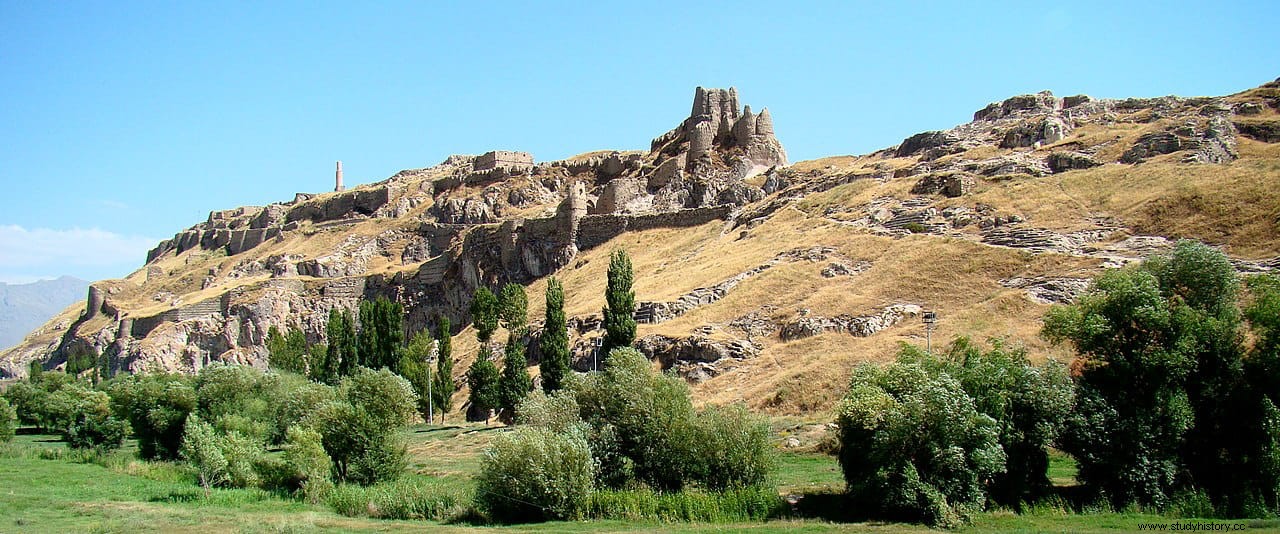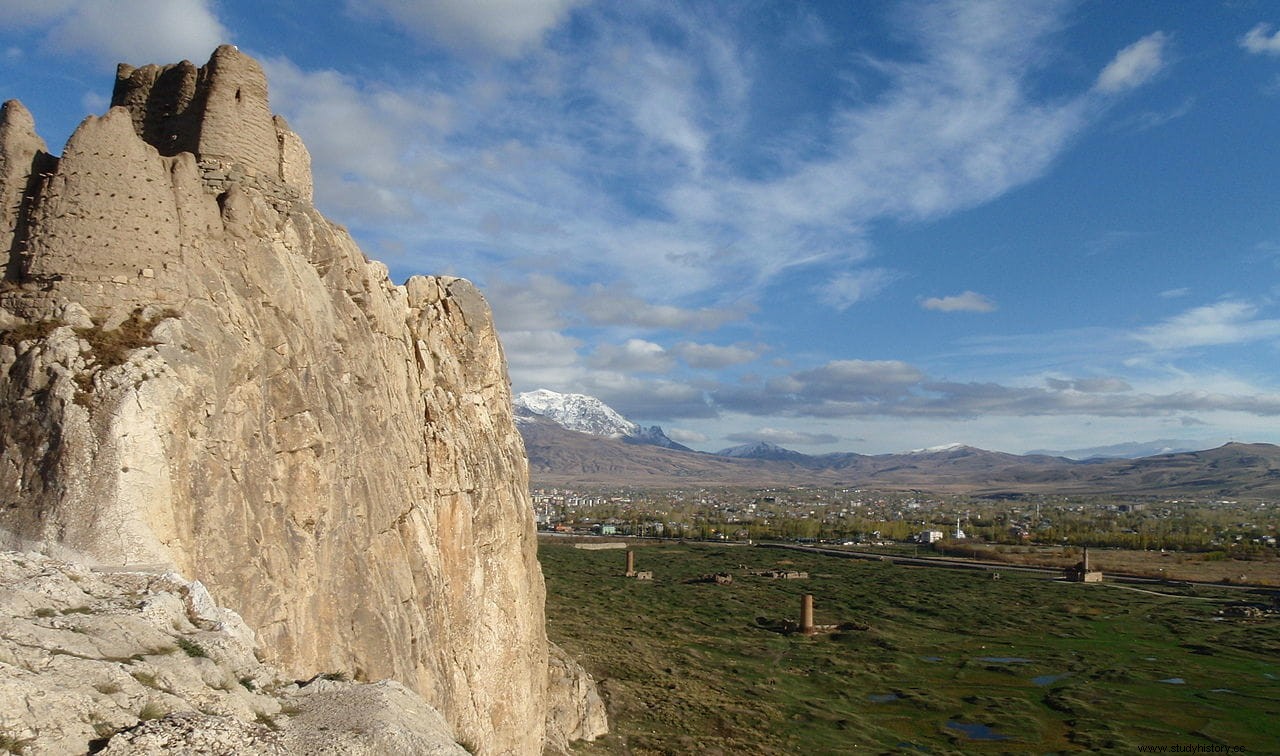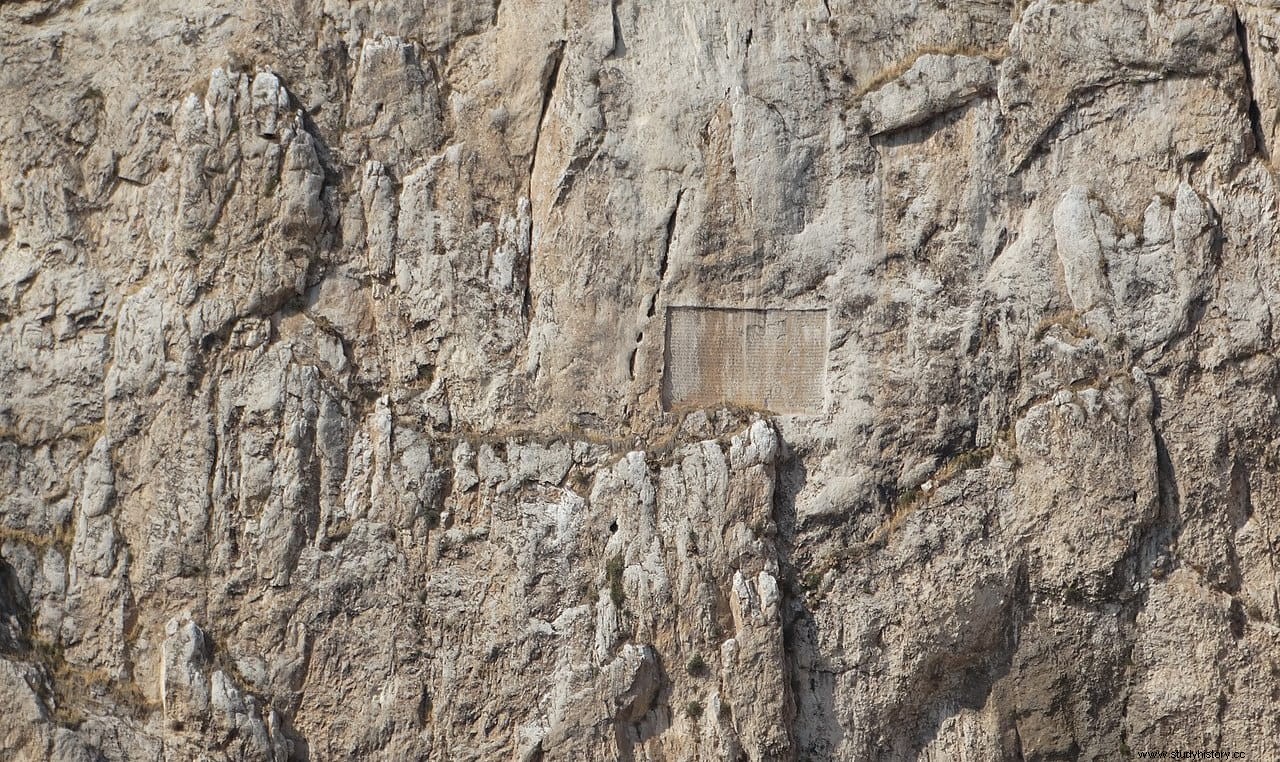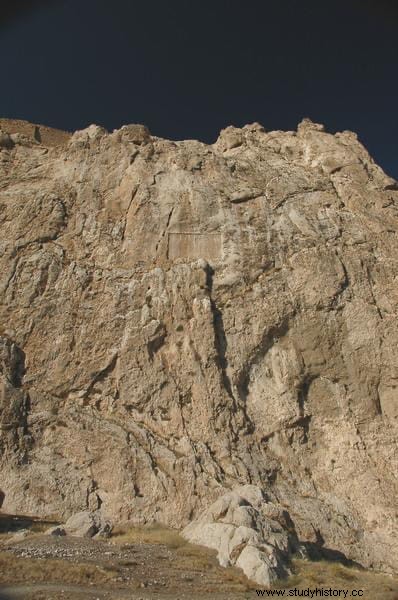Old Persian was the colloquial language spoken in the Achaemenid empire, known from tablets and seals dating to between 600 and 300 BC. Circa 521 B.C. King Darius ordered the creation of a new alphabet, which is said to have been called the Aryan alphabet , and that it was used only for the actual inscriptions. The only such inscription found outside of what is now Iran, the ancient Persian homeland, is found in the fortress of Van next to the ruins of Tushpa in Turkey.
Van Fortress, built in the kingdom of Urartu (which the Persians called Armenia) in the 9th century BC. to protect and control the territory around its capital, it is a gigantic stone fortification built on top of Tushpa, the capital of the kingdom. An inscription on the Balawat gate of the Assyrian city of Nimrud is the oldest existing reference to the city of Tushpa, and it also mentions King Shalmaneser III.

Precisely another inscription in the Assyrian language found in the area attributes the construction of a fortification to him (between 859 and 824 BC), so researchers believe that he could also have been the founder of the city.
Today the Citadel of Van is considered to be the largest surviving example of this type of massive fortress built on hills and rocky outcrops, but many others are known to have existed in the area.

The lower parts were built with large basalt blocks without using mortar, while the rest of the walls are built with bricks, among which the crenellated canvases and towers alternate today, probably the result of medieval reconstruction.
The general appearance is that of an imposing bastion or acropolis, whose defensive capabilities, however, seem not to have been particularly good. Proof of this is that throughout history numerous peoples easily took control of Van, such as the Persians, Parthians, Romans, Byzantines, Arabs, Ottomans and even the Russians.

But the area and the archaeological site are also important because on a rocky wall near the fortress, and about 20 meters high, is the only royal Achaemenid inscription found outside of Iran . Moreover, it has been preserved in almost perfect condition, possibly due to its elevated position. It consists of three columns of text with 27 lines each, written in Old Persian, Babylonian and Elamite, constituting a kind of rosetta stone of these three languages.

It was commissioned by Xerxes I sometime between 485 and 465 BC, using a niche originally dug by his father Darius, as reported in the inscription itself:
When the inscription was rediscovered in the early 19th century and published in Western academic circles in 1836, Professor Eugène Burnouf compared its content with that of other inscriptions found in Iran, and realized that they repeated the same list of satrapies, the provinces of the empire, which led him to correctly decipher up to 30 letters of Darius's new alphabet. His contribution was essential to the subsequent decipherment of Old Persian.
